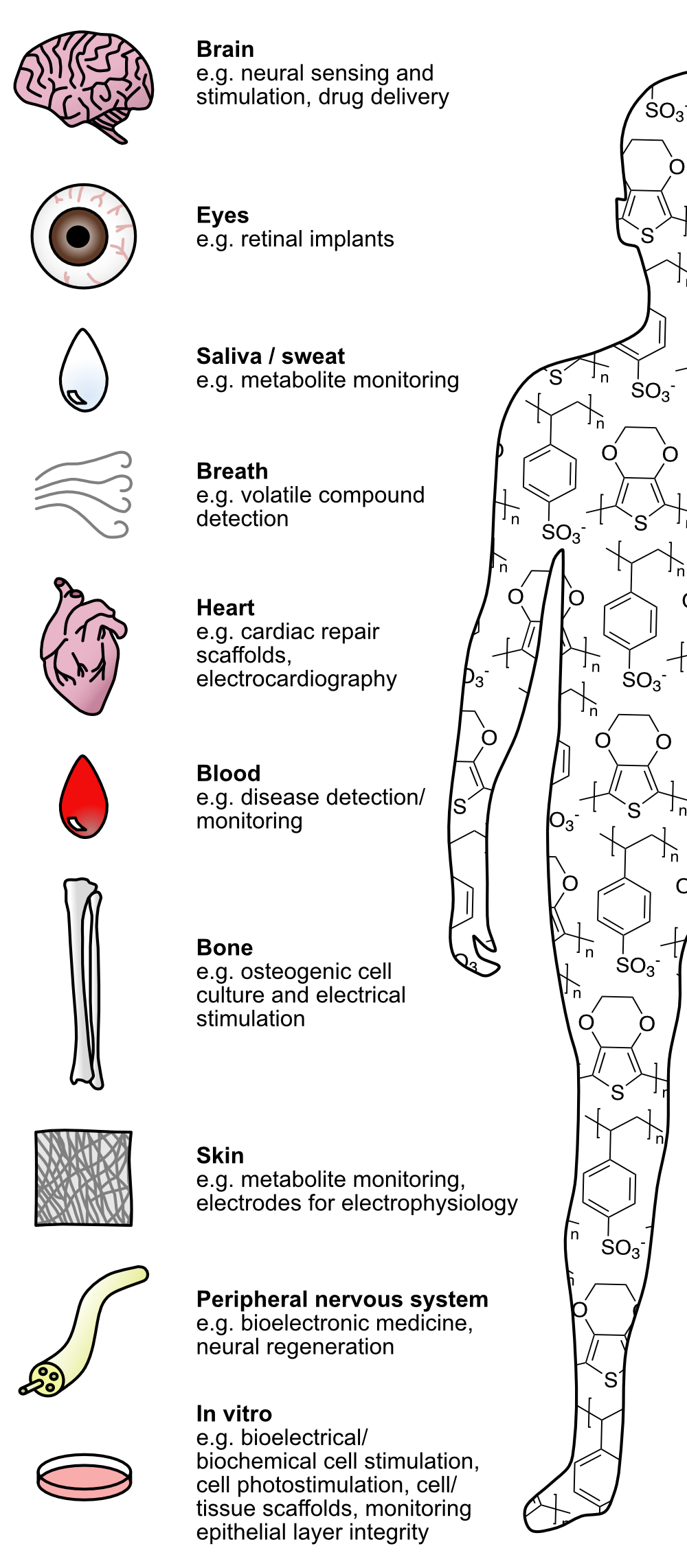Organic Bioelectronics for Biosensing
We explore the use of conjugated polymers to develop new types of biosensor and biointerfaces. Our primary focus is developing a new type of biosensor for use in the early detection of breast cancer.
Our methods
We use conjugated polymers (plastics that can semi-conduct electricity) to build devices that interface with cells, tissues and biological fluids.
Organic bioelectronic devices are typically highly sensitive to ions (the primary charge carrier of electrical signals inside living things), which make them a useful material system for translating between biological and electronical signals.1
Read our review about the use of conjugated polymers as interfaces with the human body
Organic transistor-based multiplexed detection of biomarkers
Early detection and intervention is key to improving survial outcomes in cancer patients. There is a concerted effort within the research community to focus on new techniques and approaches, with the launch of the CRUK's Early Detection and Diagnosis of Cancer Roadmap in late 2020. This includes investigating new technologies that can test for specific cancers, in this case breast cancer.
Stuart worked with Dr Ijeoma Patrick and Dr Adam Creamer to use organic electronics to build a new type of biosensor for analysing blood samples.
This work is part of a collaboration with The Stevens Group at Imperial College London/University of Oxford.
-
Redrawn from: Higgins SG, Lo Fiego A, Patrick I, Creamer A, Stevens MM, Organic Bioelectronics: Using Highly Conjugated Polymers to Interface with Biomolecules, Cells, and Tissues in the Human Body, 2020, Advanced Materials Technologies. DOI: 10.1002/admt.202000384 ↩
